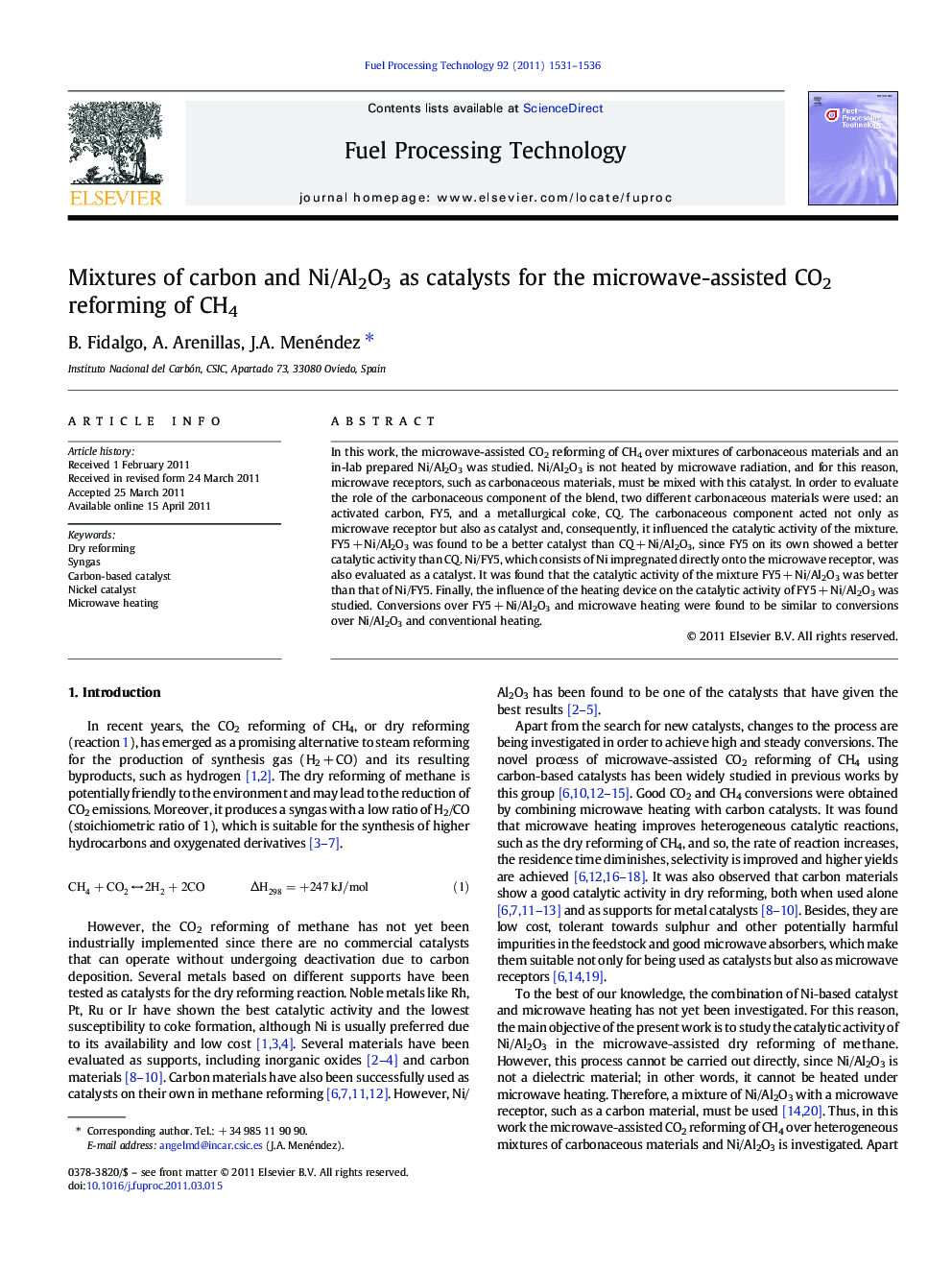| Article ID | Journal | Published Year | Pages | File Type |
|---|---|---|---|---|
| 210791 | Fuel Processing Technology | 2011 | 6 Pages |
In this work, the microwave-assisted CO2 reforming of CH4 over mixtures of carbonaceous materials and an in-lab prepared Ni/Al2O3 was studied. Ni/Al2O3 is not heated by microwave radiation, and for this reason, microwave receptors, such as carbonaceous materials, must be mixed with this catalyst. In order to evaluate the role of the carbonaceous component of the blend, two different carbonaceous materials were used: an activated carbon, FY5, and a metallurgical coke, CQ. The carbonaceous component acted not only as microwave receptor but also as catalyst and, consequently, it influenced the catalytic activity of the mixture. FY5 + Ni/Al2O3 was found to be a better catalyst than CQ + Ni/Al2O3, since FY5 on its own showed a better catalytic activity than CQ. Ni/FY5, which consists of Ni impregnated directly onto the microwave receptor, was also evaluated as a catalyst. It was found that the catalytic activity of the mixture FY5 + Ni/Al2O3 was better than that of Ni/FY5. Finally, the influence of the heating device on the catalytic activity of FY5 + Ni/Al2O3 was studied. Conversions over FY5 + Ni/Al2O3 and microwave heating were found to be similar to conversions over Ni/Al2O3 and conventional heating.
Research highlights► CO2 reforming of CH4 under microwave heating has been studied. ► Ni/Al2O3 on its own and mixed with carbonaceous materials were used as catalysts. ► Carbonaceous component acted as microwave receptor and catalyst. ► Mixtures and mw-heating yield similar conversion to Ni/Al2O3 and conventional heating.
